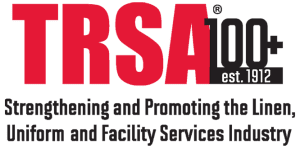EPA Sets Tougher Ozone Standards
The Environmental Protection Agency (EPA) announced on Oct. 1 changes to the ground-level ozone pollution (smog)* for the purposes of better protecting public health,** including people who suffer from heart and lung diseases and those who work outdoors. The National Ambient Air Quality Standards (NAAQS) has been reduced from 75 parts per billion (ppb) to 70 ppb. The EPA also extended the ozone monitoring season for 32 states and the District of Columbia.
 The EPA claims that the public health benefits of the updated standards are significant, estimated at $2.9 to $5.9 billion annually in 2025 and outweighing estimated costs of $1.4 billion. Initially, the EPA considered a standard of 65 ppb to 70 ppb based on studies that showed 70 ppb to 60 ppb is more effective for protecting public health. The EPA references nearly 2,300 studies which show the harmful effects that ozone has on the respiratory system and a finding that a standard of 72 ppb can be harmful to healthy exercising adults.
The EPA claims that the public health benefits of the updated standards are significant, estimated at $2.9 to $5.9 billion annually in 2025 and outweighing estimated costs of $1.4 billion. Initially, the EPA considered a standard of 65 ppb to 70 ppb based on studies that showed 70 ppb to 60 ppb is more effective for protecting public health. The EPA references nearly 2,300 studies which show the harmful effects that ozone has on the respiratory system and a finding that a standard of 72 ppb can be harmful to healthy exercising adults.
TRSA’s position has always been that 75 ppb is adequate and disagrees with the change. However, we are glad that the EPA did not choose to lower the standard to 60 ppb as several environmental and public health groups had preferred. We are continuing to monitor the situation and, since this is a final rule, we are exploring ways to contest the new standards, including legal actions.
Ozone standards are reviewed every five (5) years as mandated by The Clean Air Act, which will give states between 2020 and 2037 to meet the standards based on the severity of their ozone problem. It is estimated that the majority of U.S. counties will meet the standards by 2025. California is one of the states with counties that will have a longer time period to comply.
The EPA issued an implementation memo to states, tribes and other governing entities for guidance on enforcing the new standards. According to the EPA, existing and proposed federal rules for Industrial/Commercial/Institutional Boilers and Process Heaters (MACT standard) will help the vast majority of counties meet the updated standards by 2025 without additional action.
* Smog forms when nitrogen oxides (NOx) and volatile organic compounds (VOCs) react in the air.
**The effects on children was the main focus, where a standard of 70 ppb essentially eliminates exposures that have been shown to cause adverse health effects. The new standards are projected to protect 99.5 percent of children from even single exposures to ozone at 70 ppb.
